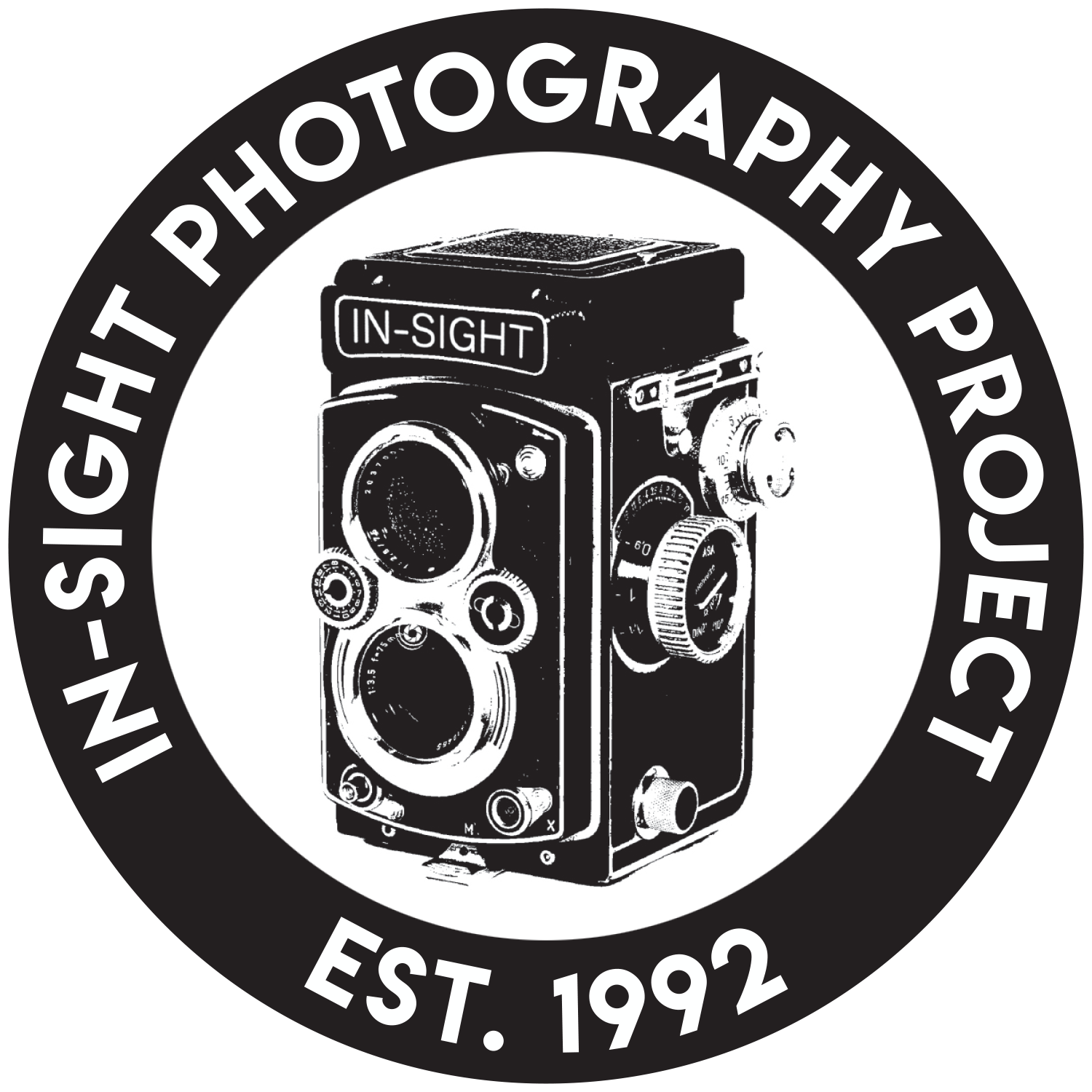Why Does In-Sight Teach 35mm Film Photography?
Since becoming executive director of In-Sight, I’m often asked, “Why does In-Sight still teach film photography?” My answer is usually something like, “It’s where we started, and kids still sign up.”
Getting back in the darkroom myself recently, though, I’ve come to a new understanding of why film (aka “analog”) photography is one of our most popular classes for tweens and teenagers, even in the digital age.
It had been 20 years since I loaded film into a camera. I was a senior in high school, and my Nikon N65’s shutter jammed. I was headed to Europe that summer and then college, so rather than buy a new film camera, I picked up a point-and-shoot digital camera.
The new camera was nice, and it did the job of documenting my travels. I was amazed at the convenience of it, though the instantaneous nature of digital felt a little odd. I’d loved film — the process, the anticipation — and my N65 had been my most prized possession. I remember being afraid that film would one day become a thing of the past. After all, why would someone spend their time on film when digital gives an immediate result?
My return to film photography and the darkroom made me realize why. I noticed two things about the analog process that I believe make it important for any young person to experience.
First: To use a 35mm film camera correctly, you have to slow down. Settings for your camera need to be adjusted manually for each shot. While a digital camera or smartphone can do the thinking for the photographer, a film camera forces the user to remember a sequence of steps and details to take into account. That’s all in addition to thinking about your potential images’ subject and composition.
There’s a lot to consider and pay attention to when using a film camera. I noticed I was more intentional and thoughtful with what I was photographing and how I was setting up each shot. In the end, each frame I took felt precious.
Second: There’s the unique sensory experience of the darkroom. Like the name suggests, it is a dark room, and it takes a few moments to adjust to the red lighting. The environment naturally promotes an unusual calmness.
Patience is central to the darkroom. A photographer must wait for their film to be exposed on the photo paper, then wait again while the paper sits in the chemical baths, then wait again while it’s on the drying rack. Despite the calm setting, there’s anticipation as the image arises from the paper. It makes the waiting tolerable.
When my prints had finally come to life, reproducing that moment I had captured days before, I felt like I understood better why we continue to teach analog photography. It is truly an art form and a science, one that requires your mind and body to stretch themselves.
It is absolutely magical to see an image emerge from blank paper. There are so many steps to get to that point. Seeing the thought and patience that went into the image pay off is rewarding.
Analog photography is a particularly special and unique experience in the digital age. It requires us to slow down, be intentional, and stretch our senses and patience.
Why does In-Sight still teach film photography? Because, in a world saturated with screens and immediacy, it is a relief for the nervous system to make art through film photography.

